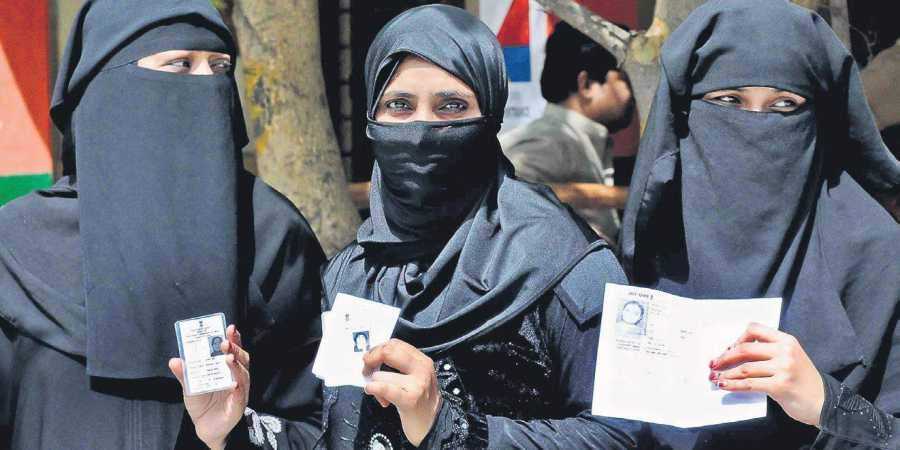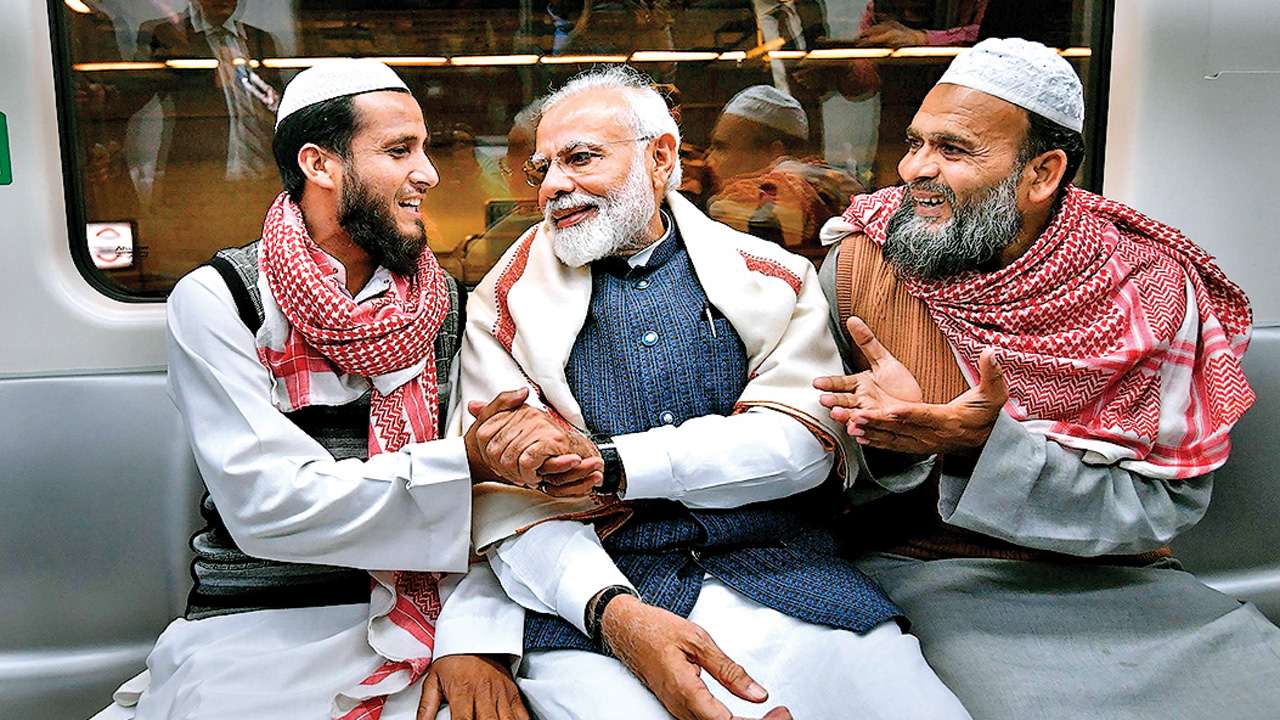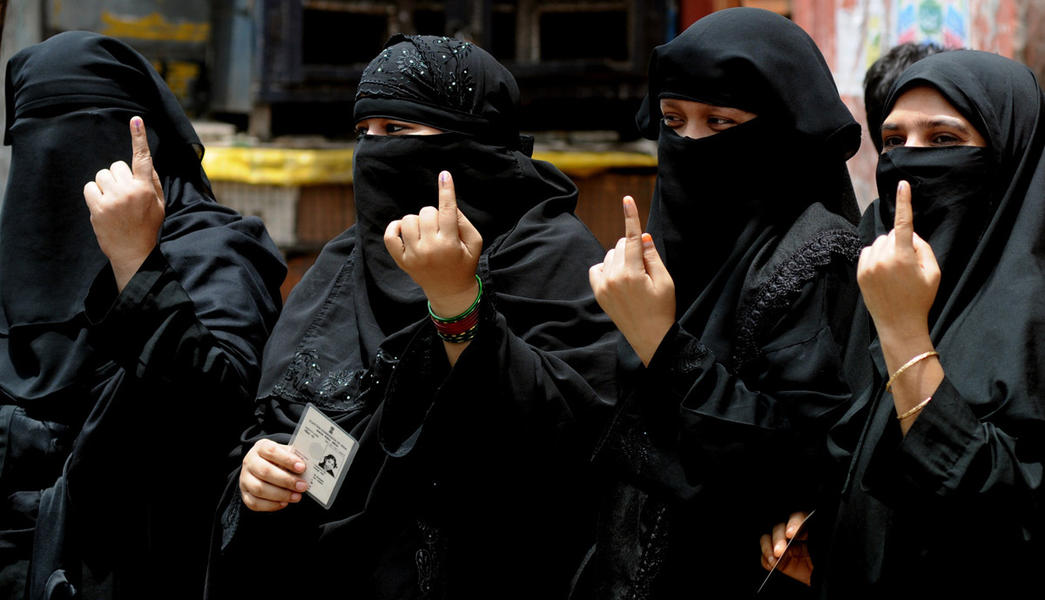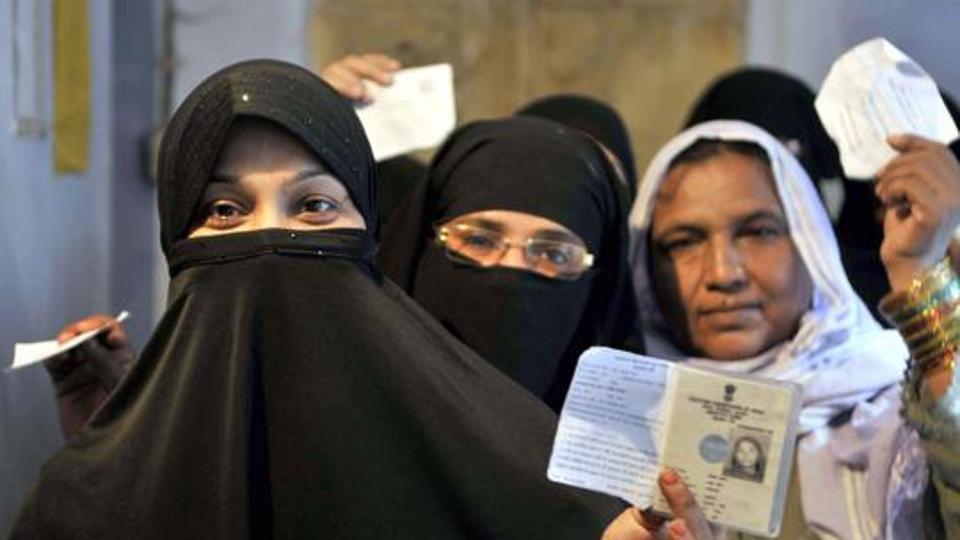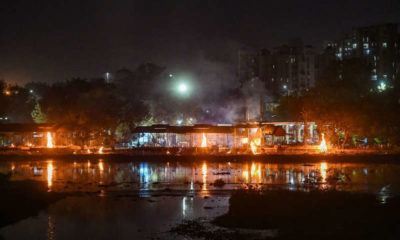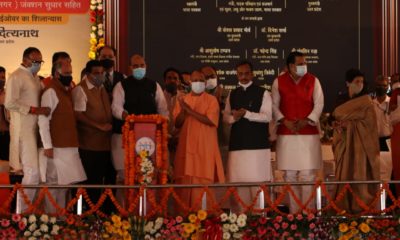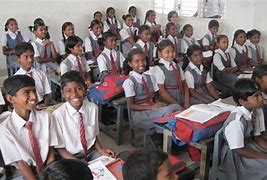Feature
Muslims silent but very tactical in Uttar Pradesh could upset BJP
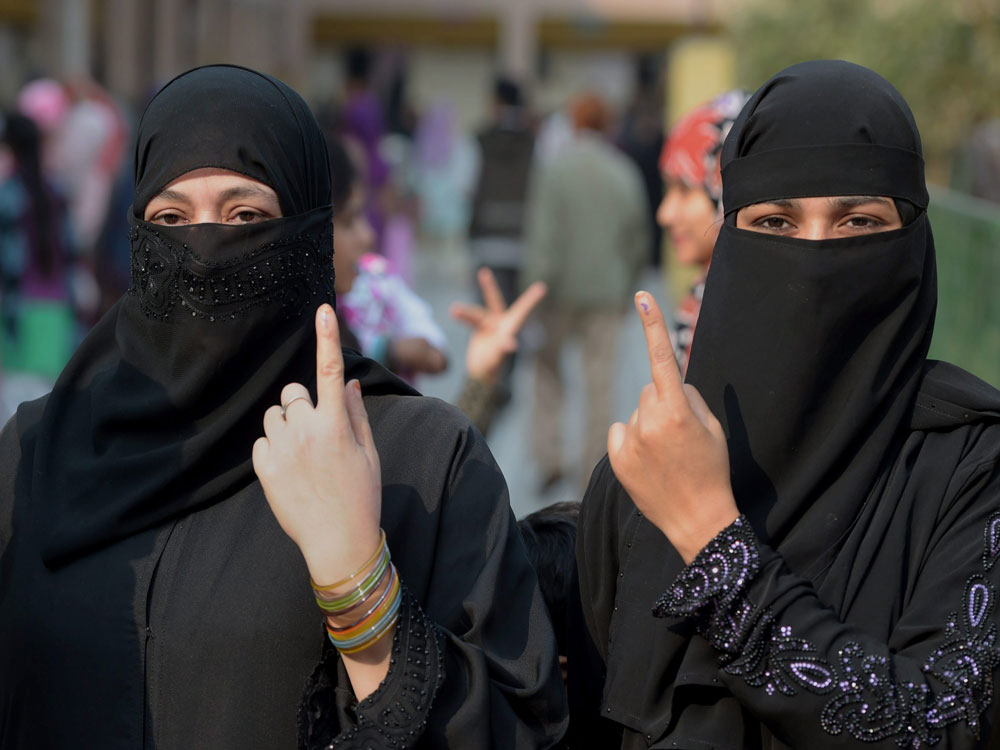
Lucknow: A silent community is said to be a dangerous community and the silence of Muslim voters in the ongoing Lok Sabha elections in Uttar Pradesh could upset the BJP apple-cart.
Muslim in Uttar Pradesh, for the first time, refused to be provoked into a religious discourse which could have led to polarization on religious lines.
The community resorted to tactical voting in the true sense of the term, and it is this that has given a surge to the SP-BSP alliance.
“Our top priority was to ensure the defeat of the BJP and we knew that the party would make all possible efforts to provoke us. More than a year ago, we convinced the clerics not to react to any statement because this would ultimately go against us. We cited the instance of 2014 and then 2017 where polarization of votes on communal lines had helped BJP get an overwhelming majority,” said a scholar from the Aligarh Muslim University (AMU) who spoke on condition of anonymity.
The AMU, incidentally, has been the hotbed of controversy in the past five years — be it its minority status, the Jinnah portrait or alleged links of students with Kashmir militants.
The Muslims, apparently, have understood that in a communally surcharged atmosphere, they would end up getting completely marginalized.
“In 2014, not a single Muslim was elected to the Lok Sabha from Uttar Pradesh. This complete obliteration of Muslims who form about 20 per cent of the population was shocking, to put it rather mildly. In this election and then in 2017, the BJP proved that it could win elections and form governments without making even a token gesture towards Muslim and this set the community thinking,” said Ramesh Dixit, a retired professor of Political Science in Lucknow University.
The Muslims, according to their own admission, have “stopped making mistakes”.
Silence of Muslim voters in ongoing LS polls in UP could upset BJP:
“In the ongoing election, the community has resorted to tactical voting. We have voted for candidates who are closer to defeating the BJP. In Saharanpur, Muslims went up to the Congress candidate Imran Masood and apologized for not voting for him. They told him that the SP-BSP alliance candidate is better placed and we want to defeat the BJP so we are going with him,” said Javed Siddiqui, a student in Saharanpur.
In Varanasi, Textile Minister Smriti Irani pumped in resources. The Deendayal Hastakala Sankul was set up to facilitate trade for artisans and weavers. But that has not helped because weavers claim that demonetization has left them jobless.
“After notebandi, we have lost business. There are no buyers and most of us are without work,” said Rafiq Ahmad, a weaver in Madanpura area.
In Lucknow, Shias-earlier known as BJP supporters-also did not go with the Bharatiya Janata Party (BJP) this time. They are upset with Yogi Adityanath’s “Ali aur Bajrangbali’ chant and says that the Chief Minister has been mocking at their religion.
A seat-to-seat analysis in Uttar Pradesh clearly shows that Muslims have supported the SP-BSP in a large number of constituencies and have gone with the Congress in constituencies where its candidate was strong.
“The SP-BSP alliance has the support of Yadavs and Jatavs and along with Muslims they emerge as a winning combination. The main issue is to defeat the BJP first,” Javed explained.
He admitted that several Muslims had reservations about voting for the BSP which now seems to be a potential ally of the BJP.
“But our main issue was to defeat the BJP. We can deal with the BSP later,” Javed added.
Entertainment
Meghalaya Reserves Legalized Gambling and Sports Betting for Tourists

The State Scores Extra High on Gaming-Friendly Industry Index
Meghalaya scored 92.85 out of 100 possible points in a Gaming Industry Index and proved to be India’s most gaming-friendly state following its recent profound legislation changes over the field allowing land-based and online gaming, including games of chance, under a licensing regime.
The index by the UK India Business Council (UKIBC) uses a scale of 0 to 100 to measure the level of legalisation on gambling and betting achieved by a state based on the scores over a set of seven different games – lottery, horse racing, betting on sports, poker, rummy, casino and fantasy sports
Starting from February last year, Meghalaya became the third state in India’s northeast to legalise gambling and betting after Sikkim and Nagaland. After consultations with the UKIBC, the state proceeded with the adoption of the Meghalaya Regulation of Gaming Act, 2021 and the nullification of the Meghalaya Prevention of Gambling Act, 1970. Subsequently in December, the Meghalaya Regulation of Gaming Rules, 2021 were notified and came into force.
All for the Tourists
The move to legalise and license various forms of offline and online betting and gambling in Meghalaya is aimed at boosting tourism and creating jobs, and altogether raising taxation revenues for the northeastern state. At the same time, the opportunities to bet and gamble legally will be reserved only for tourists and visitors.
“We came out with a Gaming Act and subsequently framed the Regulation of Gaming Rules, 2021. The government will accordingly issue licenses to operate games of skill and chance, both online and offline,” said James P. K. Sangma, Meghalaya State Law and Taxation Minister speaking in the capital city of Shillong. “But the legalized gambling and gaming will only be for tourists and not residents of Meghalaya,” he continued.
To be allowed to play, tourists and people visiting the state for work or business purposes will have to prove their non-resident status by presenting appropriate documents, in a process similar to a bank KYC (Know Your Customer) procedure.
Meghalaya Reaches Out to a Vast Market
With 140 millions of people in India estimated to bet regularly on sports, and a total of 370 million desi bettors around prominent sporting events, as per data from one of the latest reports by Esse N Videri, Meghalaya is set to reach out and take a piece of a vast market.
Estimates on the financial value of India’s sports betting market, combined across all types of offline channels and online sports and cricket predictions and betting platforms, speak about amounts between $130 and $150 billion (roughly between ₹9.7 and ₹11.5 lakh crore).
Andhra Pradesh, Telangana and Delhi are shown to deliver the highest number of bettors and Meghalaya can count on substantial tourists flow from their betting circles. The sports betting communities of Karnataka, Maharashtra, Uttar Pradesh and Haryana are also not to be underestimated.
Among the sports, cricket is most popular, registering 68 percent of the total bet count analyzed by Esse N Videri. Football takes second position with 11 percent of the bets, followed by betting on FIFA at 7 percent and on eCricket at 5 percent. The last position in the Top 5 of popular sports for betting in India is taken by tennis with 3 percent of the bet count.
Local Citizens will Still have Their Teer Betting
Meghalaya residents will still be permitted to participate in teer betting over arrow-shooting results. Teer is a traditional method of gambling, somewhat similar to a lottery draw, and held under the rules of the Meghalaya Regulation of the Game of Arrow Shooting and the Sale of Teer Tickets Act, 2018.
Teer includes bettors wagering on the number of arrows that reach the target which is placed about 50 meters away from a team of 20 archers positioned in a semicircle.
The archers shoot volleys of arrows at the target for ten minutes, and players place their bets choosing a number between 0 and 99 trying to guess the last two digits of the number of arrows that successfully pierce the target.
If, for example, the number of hits is 256, anyone who has bet on 56 wins an amount eight times bigger than their wager.

